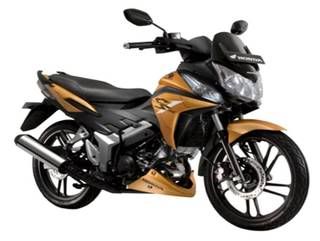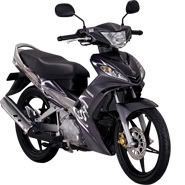Deck cargo included a R.A.A.F Dakota (DC3) A65‑81 stripped of wings and propellers, sitting on a special cradle on the main hatch cover. In the hold below was a 350 cc MAC Velocette that had the previous year, been ridden from Perth to Melbourne by George Cresswell.
“Thala Dan" moored in Horse Shoe Harbour at Mawson on 25 January after an uneventful voyage. Unloading the 800 tons of cargo was completed by 9 February after which we were able to relax and take the Velocette for a run around the camp in perfect summer weather. Riding there was difficult over the rock‑strewn ridges around the Harbour and the permanent ice slope behind Mawson was fairly steep and slippery.

In late March the sea began to freeze over and within a few weeks the ice depth was 10 inches or more, strong enough to take the weight of vehicles. The coast either side of Mawson as far as one could see, was ice cliffs ranging from 50 to 500 feet along with glaciers, ice caves, and snow drifts overhanging the cliff tops, carved by the wind to every possible shape.
In preference to Dog teams or heavy vehicles, the Velocette was used for coastal tours, often towing skiers or a dog sled. It was totally reliable and easy to start even in extremely cold conditions. The only modifications were dry lube on the control cables, lighter oils, a warmer spark plug and a briquette bag tied across the crash bars to protect our boots (Mukiuks) which were not water proof, from slush thrown up by the front wheel. Only a spare spark plug and a few basic tools were carried and on occasion, extra fuel.
One other advantage of the Velocette was its relatively light weight and low centre of gravity, when picking it up after a long slide on its side after suddenly encountering bare polished ice at high speed. The Velocette was dropped many times and never sustained any damage and none of the riders were injured. Top speed was 80 ‑ 85 mph indicated, but would have been less due to wheel spin.
The sea ice was the greatest surface Kellas claimed to have ever ridden over. It is strongest when first frozen and even relatively thin ice supported by water, is incredibly strong if of uniform thickness. As the year progresses the ice becomes thicker in depth, but with the return of the sun in Spring it begins to soften and rot from below. While the surface still looks secure, underneath it is like a soft sponge.
 Bill Kellas's MAC
Bill Kellas's MACThe Velocette was used, weather permitting, until the middle of June by which time riding was uncomfortable in the low temperatures when wind chill made frost bite a daily occurrence.
Clothing was mainly ex‑Army Korean War issue and not designed for bike riding and didn't include helmets. The Velocette was parked covered in the open until the Sun reappeared.
In spring with the daylight and temperature increasing, riding resumed as before but caution was required as the sea ice began to soften.
In early December the worst blizzard of the year struck with wind speeds exceeding the range of the anemometers (which were destroyed or failed) and visibility reduced to a few feet in drifting snow and ice crystals. This blizzard continued unabated for two days and on the third day was still gusting over 100 knots.
The Dakota and the Beaver aircraft were at the airfield at Rumdoodle in the Masson Range when the blizzard struck. When the wind and drift subsided sufficiently to venture out doors, it was found that the Beaver (which was behind a wind fence) was totally destroyed and the Dakota had broken its tie‑downs and had disappeared without a trace.

A few days later when the weather had cleared, Graham Currie riding the Velocette on the sea ice West of Mawson noticed something red high up on the glacier top.
Bill Kellas at speed on the MAC
Closer inspection confirmed it was the Day Glow red tail of the Dakota.
The plane had been blown by the blizzard about 15 miles down slope at sufficient speed, with brakes engaged, to wear the tyres and wheel rims flush with the skis. It came to rest after the undercarriage dropped into a crevassed area on the cliff top about 400 feet above the sea ice. It had then turned nose to wind and was wrecked.
Because of the crevassing around the wreck site, it was unapproachable for salvage, except caution by foot. The recovered gear, the Doppler radar, radio's, Survey Cameras along with some aircraft parts were lowered down the cliffs to the sea ice, now very soft and dangerous, to a dog team and the Velocette towing a dog sled.

The salvage was completed in two days and on the final run, a 3’ standing wave of rotten ice was visible chasing the fleeing Velocette and sled.
The total mileage covered during the year was about 3000 miles. Individual trips up and down the coast ranged from local to 50 (+) miles. The Velocette was ridden hard to cover the distances quickly, parked while areas were explored and photographed, restarted and ridden home without ever a problem. It was simply taken for granted that it would always get us home again and our faith in the bike was never misplaced.
At the completion of our tour the Velocette passed into the hands of our relief party. Beyond that point I have no knowledge of its history.

Frank Scaysbrook went in the 1968 expedition to Mawson for 14 months in the Weather Bureau and also had a 350 swinging arm MAC, which he dismantled in Australia and crated for the sea voyage to the base, re-assembling it in March.
The Australian Antarctic base, Mawson, late 1990s.
When the Velo was ready to go, the exit from the workshops doorway to the outside world had to be dug through 10 feet of snow…winter was on its way…
The Velo was parked outside at all times, yet it’s starting habits were impeccable…running on 80/87 octane aviation gasoline and Long life oil, three or four swings on the kick start were enough to get the engine firing.

The MAC was returned to Australia and is still in Sydney with Frank’s brother Dick.
Article and photos courtesy of Doug Farr, Bill Kellas, "MotorCycling" , edited by me and published in part in FTDU #331, Autumn 2005 edition.
Left click on photo to enlarge.



































 Secara fitur,… Honda CS1 menurut gue sudah memenuhi mindset konsumen… !!! Terlepaz dari design nya… engine yang digunakan 125cc, 4 stroke, SOHC dengan liquid cooled. Compression rationya juga lumayan tinggi nyampe 10.7:1…!!! Power yang dihasilkan tercatat 12.8HP pada 10000RPM…!!! Rem depan belakang sudah pake disc brake, shock belakang sudah monoshock, knalpot sudah racing, velg juga racing.. so mirip laagh dengan feature yang ada pada kompetitor terdekatnya yaitu FU-150..!!! Kalau soal design memang terjadi debatable… !!! Motor yang didesign oleh 3 ahli dari Jepang, Thailand dan Indonesia ini… cukup kontroversial.. !!! Lagh ya.. karena membuat segment baru… cukup unik..!!! Kalau soal design.. gue nggak bisa comment.. soalnya relatif sih.. dan biarkan pasar aza yang menjudge…!!!
Secara fitur,… Honda CS1 menurut gue sudah memenuhi mindset konsumen… !!! Terlepaz dari design nya… engine yang digunakan 125cc, 4 stroke, SOHC dengan liquid cooled. Compression rationya juga lumayan tinggi nyampe 10.7:1…!!! Power yang dihasilkan tercatat 12.8HP pada 10000RPM…!!! Rem depan belakang sudah pake disc brake, shock belakang sudah monoshock, knalpot sudah racing, velg juga racing.. so mirip laagh dengan feature yang ada pada kompetitor terdekatnya yaitu FU-150..!!! Kalau soal design memang terjadi debatable… !!! Motor yang didesign oleh 3 ahli dari Jepang, Thailand dan Indonesia ini… cukup kontroversial.. !!! Lagh ya.. karena membuat segment baru… cukup unik..!!! Kalau soal design.. gue nggak bisa comment.. soalnya relatif sih.. dan biarkan pasar aza yang menjudge…!!! Secara harga,… Honda cukup smart… !!! Setelah dikritik.. bahwa jika ngelepaz motor seharga Rp. 17-an jeti… pasar bakalan bereaksi negatif… harga finalnya menjadi Rp. 16.9 jeti on the road…!!! Terlihat bahwa Honda juga mendengar pasar…walau dikit… !!! Dan harga Rp. 16.9 jeti … menurut gue juga ‘pricing test’ … karena bisa saza seperti Supra X 125.. jika kedodoran.. harga toh bisa dikoreksi…!!! So ngapain buru-buru mengkoreksi harga… toh skema kepemilikan masih ada melalui kredit / leasing..!! Ada anak perusahaan yang cukup kuat… dan siap mendukung product ini di pasaran…!!!
Secara harga,… Honda cukup smart… !!! Setelah dikritik.. bahwa jika ngelepaz motor seharga Rp. 17-an jeti… pasar bakalan bereaksi negatif… harga finalnya menjadi Rp. 16.9 jeti on the road…!!! Terlihat bahwa Honda juga mendengar pasar…walau dikit… !!! Dan harga Rp. 16.9 jeti … menurut gue juga ‘pricing test’ … karena bisa saza seperti Supra X 125.. jika kedodoran.. harga toh bisa dikoreksi…!!! So ngapain buru-buru mengkoreksi harga… toh skema kepemilikan masih ada melalui kredit / leasing..!! Ada anak perusahaan yang cukup kuat… dan siap mendukung product ini di pasaran…!!! Target Market share / penjualan, … cukup menarik untuk dibahas… !!! Yup karena targetnya adalah paling sedikit 15 rebu unit perbulan…!!! Nah ini yang gue bingung… pigimana sih petanya…??? Supra X 125 tuh sekitar 40 rebu unit per bulan,… Jupiter MX 135 sekitar 30 rebu unit sebulan… Shogun 125 sekitar 8 rebu unit, dan FU-150 sekitar 4 rebu unit sebulan…!!! Nagh.. target 15 rebu unit sebulan.. kira-kira mau ngambil market share yang mana…??? Mau itung-itungan sumbangan.. dari FU-150, dari Jupiter MX 135 dan dari Supra X125 sendiri… apa nyampe target segitu… apalagi target 15 rebu unit itu target minimal…!!! Apa bisa 40% konsumen Jupiter MX 135 + FU-150 pindah ke Honda CS 1…??? Beda harga sekitar 2 jeti dibandingkan Jupiter MX 135… ??? Waduuuh.. gue nggak bisa nge-judge deh… biarin aza.. market aza.. dan gue lebih demen memperhatikan angka aza… ntah bulan April atau Mei 2008
Target Market share / penjualan, … cukup menarik untuk dibahas… !!! Yup karena targetnya adalah paling sedikit 15 rebu unit perbulan…!!! Nah ini yang gue bingung… pigimana sih petanya…??? Supra X 125 tuh sekitar 40 rebu unit per bulan,… Jupiter MX 135 sekitar 30 rebu unit sebulan… Shogun 125 sekitar 8 rebu unit, dan FU-150 sekitar 4 rebu unit sebulan…!!! Nagh.. target 15 rebu unit sebulan.. kira-kira mau ngambil market share yang mana…??? Mau itung-itungan sumbangan.. dari FU-150, dari Jupiter MX 135 dan dari Supra X125 sendiri… apa nyampe target segitu… apalagi target 15 rebu unit itu target minimal…!!! Apa bisa 40% konsumen Jupiter MX 135 + FU-150 pindah ke Honda CS 1…??? Beda harga sekitar 2 jeti dibandingkan Jupiter MX 135… ??? Waduuuh.. gue nggak bisa nge-judge deh… biarin aza.. market aza.. dan gue lebih demen memperhatikan angka aza… ntah bulan April atau Mei 2008





.jpg)
+viceroy+engined.jpg)
.jpg)




